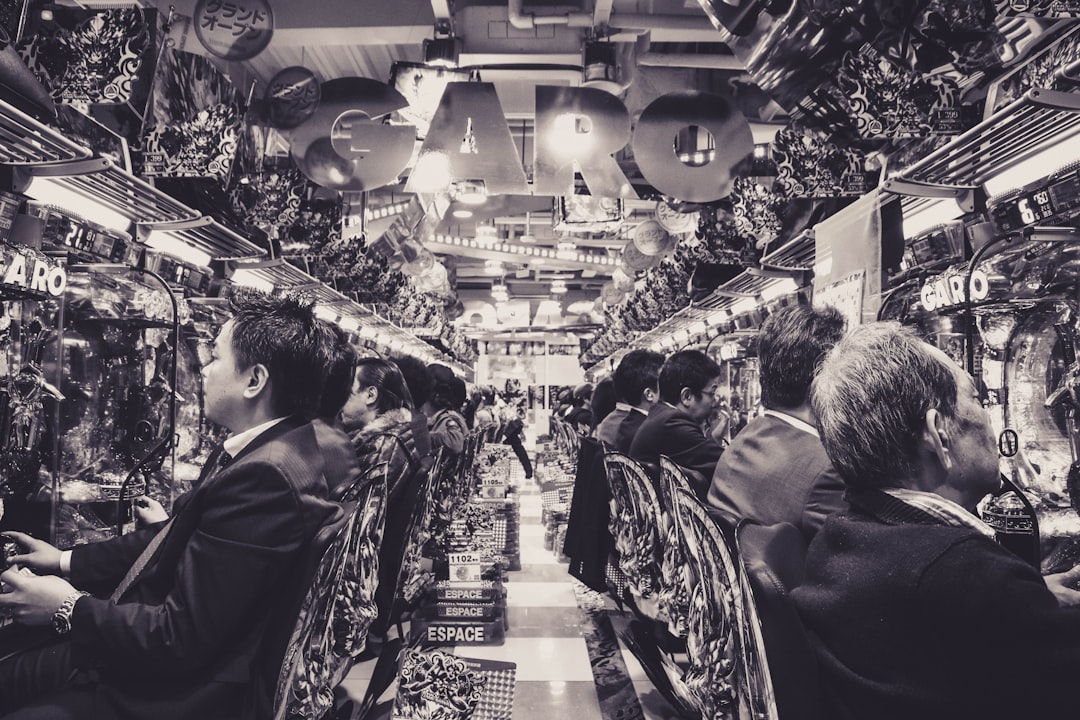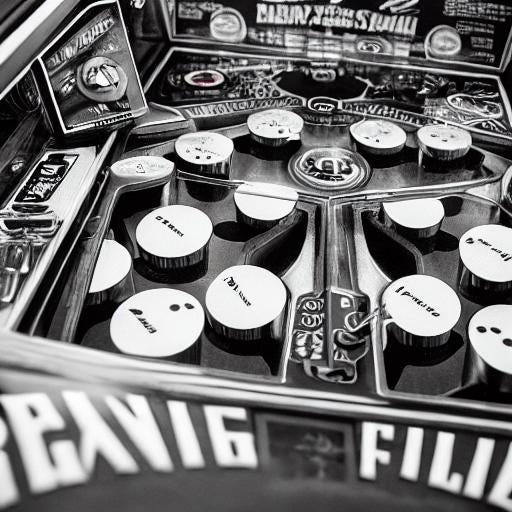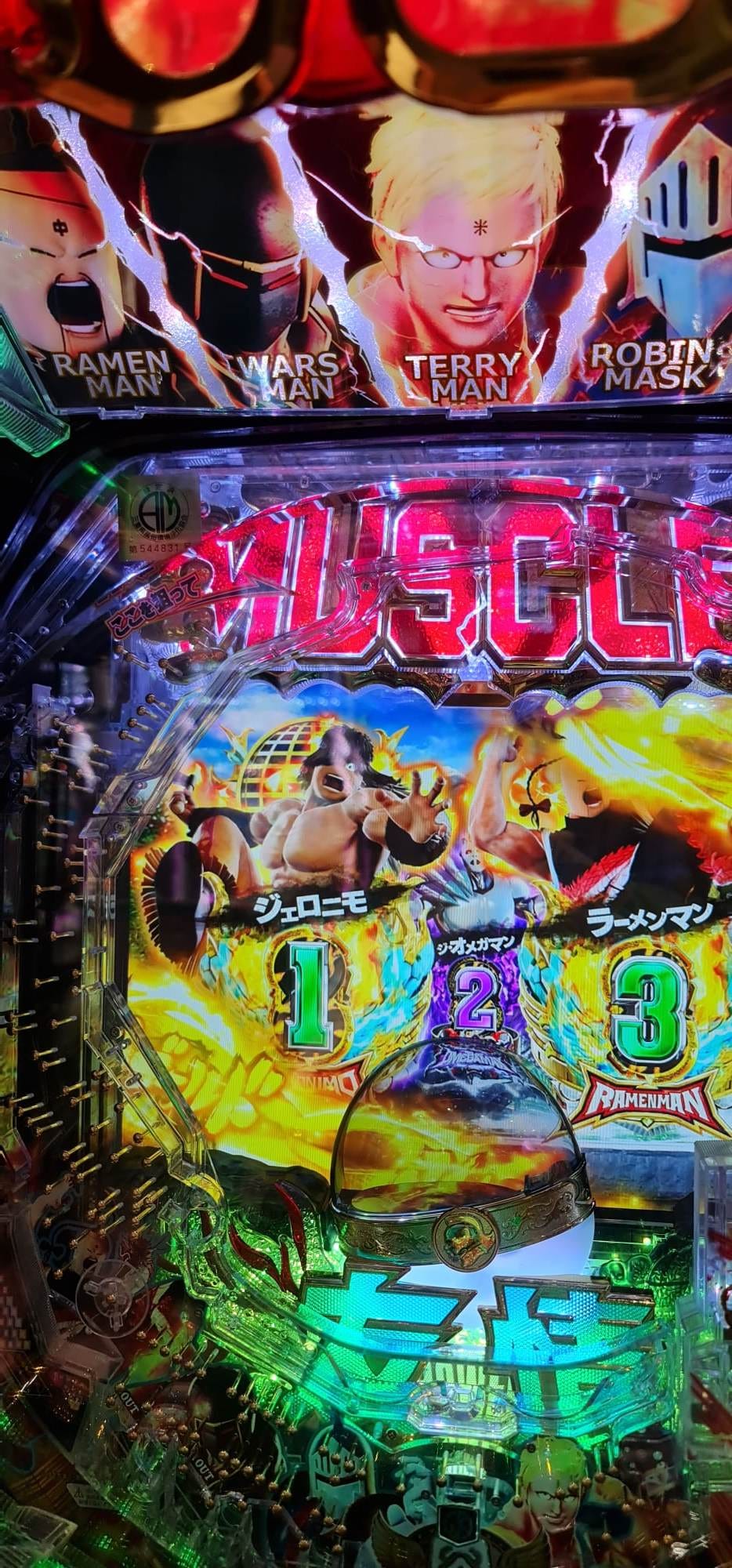There are few sounds more Japanese than the rattle of pachinko parlours. Heard in every town across the country, pachinko is almost a national sport. For many locals, pachinko is seen as a scourge on society. Only when we delve into the history of the mechanical machines can we understand Japan’s relationship with gaming and gambling.
But why isn’t pinball this popular? Both involve small metallic balls that are sprung vertically into the ‘play area’, and involve wacky themed machines (I’ve included a fun photo later!). But unlike pinball where you’re racking up points to get a high score, the goal of pachinko is to win as many balls as possible.

Gaming cousins
While all this sounds like harmless fun, most local people see pachinko as a form of legalised gambling. The fact that the pachinko market across Japan earns more revenue yearly than all the casinos in Las Vegas, Macau, and Singapore combined, bolsters this view. Pinball, try as they might, isn’t making that much money.
Both games took root in a 1720’s French Aristocracy game called bagatelle, a pool-like game where the aim was to pot the various bagatelle balls into holes using a cue. Bagatelle was a wet-weather alternative to croquet, but struggled to overcome other indoor French aristocrat hobbies like drinking wine, eating cake, and ignoring the cries of the proletariat. A little while later croquet went into its own decline with people claiming it was too ‘scientific’ (or they realised that they had been conned into playing croquet even though they weren’t 80).
Bagatelle had to evolve to stay relevant, and version 2.0 was aptly named Billard Japonais, or Japanese Billiards, a precursor to the modern versions. While having nothing to do with Japan, the inventors must have thought this sounded cool (similar to the Japonaise cake) and appropriated the Japanese name. These looked a lot like prototype machines that you can find in the arcades, with metal pins, replaced the cue with a spring loaded plunger, and a tilted table. This remained fashionable for the better part of a century and was exported to various un-French locations including the USA and Japan.
It was in the 1930’s that local preferences started to shape this arcade game. For the US and Japan, it was the era of bolting electronics onto everything. Flashing lights and bells indicated scoring points. It was an exciting time for manufacturers trying innovations and seeing what stuck. The flippers were a success in the US but never caught on in Japan.
Man was bringing everything to life. The US government went so far as to ban these machines in the 1930’s, perhaps due to the release of the Frankenstein film, or maybe (definitely) because the country was in the depths of the Great Depression.
Pinned down
During the 1930’s rich and powerful men in the US didn’t partake so much in these hobbies. Instead their hobby was banning things others enjoyed. After banning alcohol, gambling, and profanity in movies, cities across America all lined up to ban pinball. These were all very wise decisions and eliminated vices forever.
Pachinko on the other hand was thriving during the 1930’s, until Japan also closed down the parlours. Their rationale was “we’re at war now”. However, Pachinko became legal again almost immediately after the war, whereas pinball stayed illegal in much of America until the 1970s.
While the US saw the informal gambling and prize system as a reason to reject pinball, Japan embraced this aspect. Following the Japanese surrender, WWII Japanese refugees in Nagoya were in need of subsidies. At the time, there was as strong aspect of shame associated with simply accepting charity, especially from external forces. As a workaround, pachinko formed the basis of ‘earning’ prizes. The more you won at pachinko, the more basic necessities were provided.
Here the prize system was formalised. It allowed for the distribution of essential goods without diminishing the player's self worth. It’s not surprising that pachinko quickly became a national obsession.
Just think about how popular gambling is where you live, but replace all social and government anti-gambling adverts with positive messaging. It was during this time in the 1950’s that pachinko revenue was greater than department store revenue.
Nothing to see, officer!
The 1950s and 1960s was when Japan got richer. Unexpectedly, there was also a problem for the parlours. For gambling to work effectively, pachinko needed to remain a luck-based machine. No amount of skill should allow customers to consistently win more balls than they put in, otherwise the operators would all be ball-less!
Thus, innovations were developed over the years to make the game even more thrilling for patrons and allowing for mechanisms that created the illusion of control. Such designs grew ever more elaborate, implementing electronic displays and immersive sound systems by the 1990’s. This computerisation meant data tracking and win rates were more easily determined. The pachinko manufacturers had now fine-tuned a system that doled out the perfect amount to keep the players happy and their own shareholders happier.
With gambling technically illegal, the stage in modern day Japan was set for an ingenious (or deceitful) design of the pachinko ecosystem. It has led to a dance between government regulators and operators to offer a multi-step façade of legitimacy.
The parlours only offer the chance to win pachinko balls. They don’t prevent any participant to leave the premises with these balls, so players must spend them or trade them in for “tokens”. Totally unrelated, there are stores near each parlour that have a burning desire to trade your tokens in exchange for badges, and yet another kind of store that will exchange your badges for money. None of these stores are officially connected, yet many have a sneaking suspicion that these venues are all collaborating to facilitate gambling.
If you step into any pachinko parlour today, each machine will have the win rate labelled clearly. The messaging is clear in Japan “This is a highly regulated luck based game where the house always wins, but isn’t gambling”.
This convoluted three-shop system allows everyone to go about their lives secure in the knowledge that they haven’t participated in gambling. Neither the pachinko manufacturers, nor stores, nor the patrons are culpable in the illicit (and more importantly antisocial) trade of gambling.
I like to ban in America
Contrast the above with American pinball, where it took until the 1970’s for pinball to be re-legalised. Before then, any pinball machines would be physically smashed and the offending shopkeepers harshly fined. In the 1970’s US manufacturers were battling government regulations to legalise the game. They made pinball more controllable and skill-based to try and squeeze into arcade halls as a pure amusement game. This meant that skilled players could truly battle on score and ability by aiming ball where they wanted. For more on this story, watch the 2022 movie Pinball: The man who saved the game, which details the legal battle very well with one very gratuitous false moustache.
The evolution of these two parlour games reflect how the two countries approach not just gambling but all vices. For America, there may be the paternalistic idea that governments should prevent the less educated masses from participating in games of chance. For a lot of items of proletariat fun, there is a policy to regulate and restrict access (firearms being a notable exception). This can extend to the concept of cancel culture, the war on drugs, fear of rock and roll, and even the Kinder Surprise Egg prohibition.
For Japan, pachinko can be seen as a case of plausible deniability, with its humble origin story of being a supposed tool to redistribute wealth. While paternalist instincts exist in Japan, it could be that the country is much more willing to create elaborate mental and legal loopholes to allow for such vices to coexist in polite society. This unique approach to combatting society’s ills has meant a more permissive culture on certain things like smoking, maid cafes, and alcohol vending machines.
The cultural separation in tolerating pachinko and pinball has shaped deeper ridges in each society. Each bring certain baggage but ultimately the people decide what society they live in.
Comment below on whether you prefer a pachinko or pinball society. What other games have informed your society? Any further insight welcome!





I think the US is in some sense very much a poker society.
This was so interesting - well done